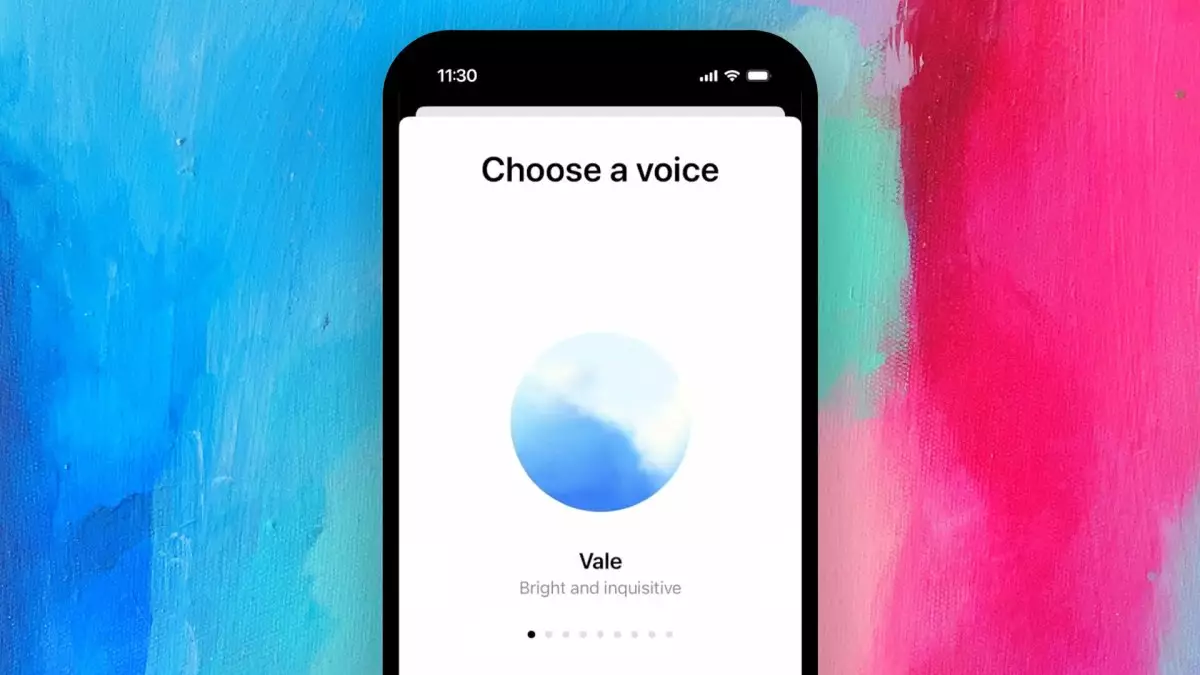In a significant move to enhance user interaction, OpenAI has introduced the Advanced Voice Mode (AVM) for ChatGPT that promises to make conversations with the AI feel more natural. Announced on September 24, 2024, this extended functionality will first be accessible to paid users on the ChatGPT Plus and Teams subscriptions, with a rollout for Enterprise and Education users planned for the following week.
One of the most notable aspects of the AVM is its vibrant new design—an animated blue sphere now represents the voice feature, a shift from the previously showcased animated black dots. This redesign not only offers a visual appeal but potentially indicates OpenAI’s intention to create a more engaging interaction framework for users. When the AVM becomes available, users will receive an alert in the ChatGPT app, providing a seamless transition into the new voice features.
OpenAI has made strides not just in the visual representation but also in the underlying technology, enhancing the user experience with additional functionalities. The introduction of Custom Instructions and Memory allows users to tailor their interactions, a crucial step toward personalization in AI conversations. This level of customization helps foster a unique interaction style for each user, addressing a wide variety of communication needs.
In terms of vocal options, OpenAI has unveiled five new voices: Arbor, Maple, Sol, Spruce, and Vale. This diversity brings the total to nine different voices, closely rivaling similar offerings from competitors such as Google’s Gemini Live. The nature-inspired nomenclature of the voices is more than just a branding strategy; it reflects an emphasis on creating a more organic dialogue, which enhances the listener’s experience.
However, the decision to exclude the voice named Sky, which previously faced backlash for its perceived similarity to actress Scarlett Johansson’s voice, is noteworthy. This incident raises questions about the ethical implications of voice synthesis and the importance of brand respect in technology. The swift removal of Sky points to a careful positioning by OpenAI to avoid legal entanglements, showing an understanding of the sensitive interplay between technology and personal representation.
Despite the promising updates, the absence of features like video capabilities and screen sharing from the initial package is striking. Initially showcased four months prior, these multimodal features would have allowed ChatGPT to interpret visual data while processing audio. The lack of a timeline for their release leaves users anticipating further innovation but also raises questions about the developmental priorities within OpenAI.
Nevertheless, the adjustments made since deploying the AVM alpha test are encouraging. According to OpenAI, the improvements include enhanced accent recognition and smoother conversational flows. Nevertheless, early tests highlight that some users still encounter glitches, suggesting ongoing refinements are necessary before the AVM can be deemed flawless.
While the rollout of AVM is thrilling, it is vital to consider the geographic limitations of its availability. The ongoing restrictions in regions such as the EU, U.K., Switzerland, and others may hinder the global integration of this innovative tool. Access inequality in technology features is an issue that companies should aim to address, ensuring that advancements do not exclude vast user segments across the world.
Ultimately, OpenAI’s introduction of the Advanced Voice Mode to ChatGPT marks a significant leap forward in AI-driven interactions. The revamped design, new vocal options, and customization features are all steps toward creating a more natural conversational experience. However, the company must navigate the challenges of ethical considerations surrounding voice replication and the logistical barriers to accessibility. As it stands, the launch of AVM has set the stage for further advancements, leaving many excited about the AI’s potential to foster more human-like exchanges in the digital landscape.

